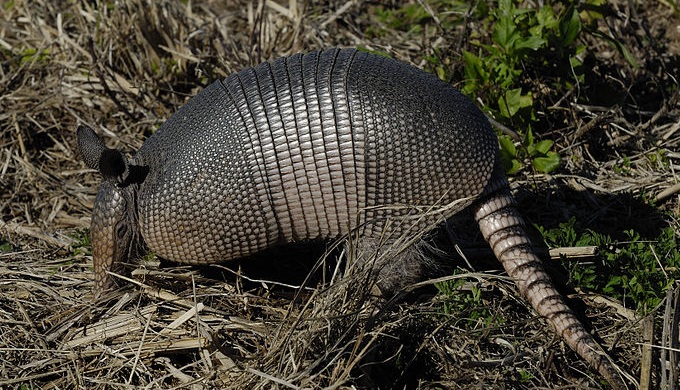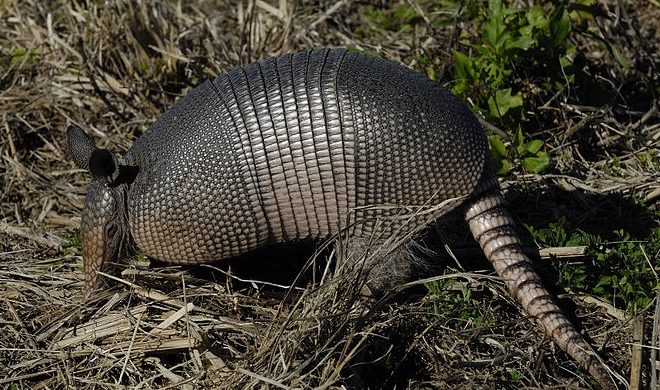Though few see armadillos in the wild, everyone knows what the Texas state small mammal looks like. This odd-looking creature still resembles its ancient relatives, and there are some interesting facts about these creatures that few know. Take a fresh look at the armadillo and see it in a new light.
Nature
4 Little-Known Facts About Armadillos
1. They Need a Lot of Baby Supplies

Photos: Wikimedia Commons
Armadillos have the distinction of giving birth to exactly four babies with each litter, but what’s unusual is these four offspring are all identical quadruplets. This happens the same way identical twins in humans are born. A single fertilized egg splits, but in armadillos, the egg splits into four parts, each of which grows up into an armadillo with the same genes as its siblings. Perhaps that’s why people say all armadillos look alike.
2. Many Types of Armadillo

Photo: Wikimedia Commons
Texas is not the only place where you’ll find armadillos. These animals live in both North and South America. One way to distinguish the many types of armadillo is the number of bands. In South and Central America three-banded and six-banded armadillos may be found, but the armadillos of Texas are only the nine-banded variety. Other types may include the more unusual hairy screaming variety and the pink fairy type.
3. They Cannot Roll into a Ball

Photo: Wikimedia Commons
Despite common belief, these mammals typically cannot roll into a tight ball, with one exception. The only type of armadillo capable of this feat is the South American three-banded variety. If you see one of these animals in the wild in Texas, it won’t roll into a ball no matter how you want to see it do that because Texas only has the nine-banded type.
4. They Can Carry Leprosy

Photo: Wikimedia Commons
The feared disease of ancient times has two carriers: man and the armadillo. Though cases of leprosy transmitted to humans from these animals are rare, they do occur. Contact with the mammals or eating their meat could result in a human contracting the bacteria. The good news is today, modern antibiotics keep this disease from becoming the feared plague of old. If you develop strange symptoms after contacting an armadillo, see your doctor, just to be safe.
References:



